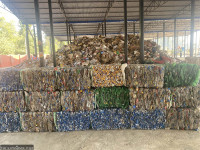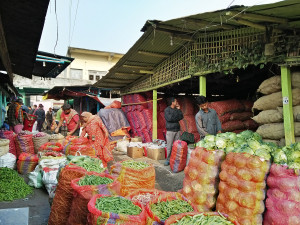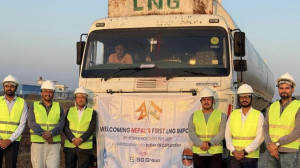Money
Improving power lines next on NEA’s agenda
After achieving the miraculous feat of eliminating load-shedding at major places in the country, the Nepal Electricity Authority (NEA) has prioritized the upgradation of old transmission lines and the construction of new ones in a bid to ensure smooth distribution of power.
After achieving the miraculous feat of eliminating load-shedding at major places in the country, the Nepal Electricity Authority (NEA) has prioritized the upgradation of old transmission lines and the construction of new ones in a bid to ensure smooth distribution of power.
The state-owned power utility has been mulling to erect a number of power lines in the country along with a few cross-border transmission lines connecting neighbouring countries.
“We have put our focus on the development of transmission lines as they are very essential for efficient distribution of electricity throughout the country,” said NEA Managing Director Kulman Ghising, speaking at an interaction programme on Nepal’s transmission network system on Wednesday. “We are considering building different transmission lines for different river basins.”
Likewise, NEA Director Hitendra Dev Shakya outlined the power utility’s strategy to optimize the national energy grid by constructing six cross-border interconnection corridors and 11 transmission lines considering the projected power output of 22,000 MW by 2035.
“A review is in progress and it will study the requirements and feasibility of major transmission projects such as the east-west transmission highway of 400 kV and 765 kV, mid-hill transmission corridors of 400 kV and 220 kV and north-south corridors of 220 kV and 400 kV,” said Shakya.
Representatives of independent power producers (IPPs) participating in the programme complained that national power producers were discriminated against by the NEA.
“There is a special provision for transmission lines for foreign power producers, but there is no such provision for national producers,” said Atma Ram Ghimire, managing director of Liberty Energy. “Domestic power producers are finding it difficult to evacuate their energy due to lack of transmission lines.”
Ghimire said that double circuit transmission lines could evacuate more energy than single circuit transmission lines. He added that IPPs were ready to adopt a build, own, operate and transfer (BOOT) model to develop power lines.
The interaction programme was organized by the Energy Development Council with the objective of identifying major problems to create an effective transmission line system and various measures to remove bottlenecks in the system resulting in a more effective and beneficial power system.




 11.12°C Kathmandu
11.12°C Kathmandu














